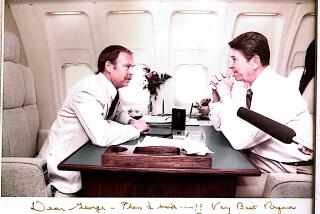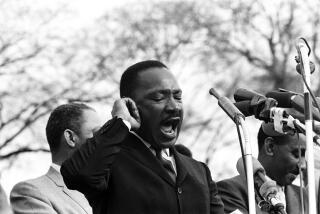Opinion: Our bicentennial view of the Declaration of Independence
The nation’s bicentennial coincided with my senior year in high school, and we were all puffed with the synchronicity of the calendar. “Spirit of ‘76” class mottoes, a senior play centered on the Revolution (I’ve forgotten the name: “1776 ” maybe?), and a sure sense that the coincidence of history and present meant something.
It was, in retrospect, a tumultuous time. But then, all of our historical windows open into something unsettled, it seems. In this case, we were leaving high school less than a decade after race riots stained city streets (though not in our little village in western New York, where we watched it as spectators on the evening news, when our parents let us). It was two years after President Nixon resigned in the nation’s worst constitutional crisis (thankfully, the Constitution won), and a year after the fall of Saigon and the end of a war that had raged for as long as I could remember – much like the roles Iraq and Afghanistan have played in my sons’ lives.
Russia was still the heart of the Soviet Union, and the missiles that could end civilization were scattered around the world. Communism was the foe and sworn enemy then, and modern fault lines of our domestic political schism were just awakening with Ronald Reagan’s rise (he was rejected by the Republican Party as a presidential candidate that summer, but would lead his own Reagan Revolution four years later).
With the Fourth of July coming up tomorrow – and, as the world knows, it’s Throwback Thursday on Facebook – I thought I’d dig back into the archives and see what the Los Angeles Times editorial board had to say about the nation’s 200th birthday. It’s striking how, for all the changes in the world since then, how little has, in fact, changed. The original is a long editorial, I’ve posted only the last couple of sections of it here.
----
At the time he wrote the immortal sentiment that “all men are created equal,” the author of the Declaration of Independence was a slave owner, and so were many others who pledged “our lives, our fortunes, and our sacred honor” to the cause of human liberty.
They were fully aware of the contradiction, and troubled by the gulf between the noble words and the enslavement of one quarter of the population. No rationalization could ever bridge that chasm. The very concept of human bondage, aside from its reality, was a constant rebuke to the new nation. The protests began in the tiny tributaries of national consciousness, and finally the gathering waters came together to form a turbulent river.
Less than a century after 1775, brother met brother on the field of bloody conflict to settle the issue. The victory won at such great cost was abandoned in the century that followed, as the nation, engrossed in the mighty sweep westward, pushed its frontiers to the Pacific Ocean. The victory was lost, but not lost for all time, and we are now in a new awakening with a greater awareness that freedom is indivisible, that a people divided on race cannot be politically and spiritually whole and united to confront a world largely hostile to all freedom.
And yet this nation of two Americas has survived to this day of July 4, 1976, and tomorrow the American experiment enters its third century. We have come from a glorious beginning and an imperfect past to the imperfect present to face an uncertain future.
But that was always so. The 2½ million Americans on the edge of a vast continent in 1776 had no assurance of their future. A nation now grown to a mighty 214 million can have no assured future in 1976. But we can draw inspiration and courage from the past, all the past, with all its victories and defeats.
We have fought ignoble wars for ignoble ends, yet at the decisive moment in our history we decided that a nation “conceived in liberty and dedicated to the proposition that all men are created equal” would survive united and free. We entered two world conflicts and tipped the scales against tyranny. And today our immense power is still trusted by the free people of the world as their first line of defense against tyranny in monstrous and new forms.
What kind of people, then, are we in 1976? We as a diverse people, the most diverse in history, a people drawn from the ends of the earth, a people of contradictory impulses, and yet a people who have justified the vision of the American poet Emma Lazarus:
Give me your tired, your poor
Your huddled masses, yearning to breathe free …
We are two Americas, but predominant over 200 years has been the better American. Buffeted by the tempests of two centuries, the great pillars of the Constitution still stand, and the Declaration of Independence and the Constitution remain the most revolutionary charters of liberty ever penned, infused with the spirit reflected so long ago by Jefferson who proclaimed, “Nothing then is unchangeable but the inherent and inalienable rights of man.”
A nation can have no greater gift from the past, and no greater promise for the future.
Follow Scott Martelle on Twitter @smartelle
More to Read
A cure for the common opinion
Get thought-provoking perspectives with our weekly newsletter.
You may occasionally receive promotional content from the Los Angeles Times.







